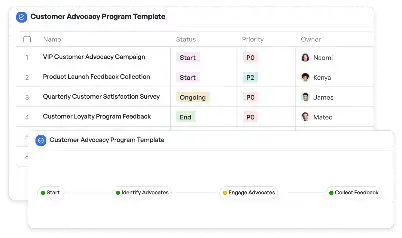BCI-Powered IoT Device Authentication
Achieve project success with the BCI-Powered IoT Device Authentication today!

What is BCI-Powered IoT Device Authentication?
BCI-Powered IoT Device Authentication refers to the integration of Brain-Computer Interface (BCI) technology with Internet of Things (IoT) devices to create a secure and seamless authentication process. This innovative approach leverages neural signals to verify user identity, ensuring that only authorized individuals can access IoT systems. In industries like healthcare, smart cities, and autonomous vehicles, where security and precision are paramount, this technology is a game-changer. For instance, imagine a healthcare wearable that only activates for its intended user, or a smart home system that recognizes its owner through neural patterns. The unique combination of BCI and IoT not only enhances security but also opens up new possibilities for personalized and intuitive device interactions.
Try this template now
Who is this BCI-Powered IoT Device Authentication Template for?
This template is designed for professionals and organizations operating in high-security and high-tech environments. Typical users include IoT developers, cybersecurity experts, healthcare technology providers, and smart city planners. For example, an IoT developer working on smart home devices can use this template to streamline the integration of BCI-based authentication. Similarly, a healthcare provider deploying wearable devices for patient monitoring can ensure that sensitive data remains secure. The template is also ideal for autonomous vehicle manufacturers who need to authenticate drivers in real-time. By catering to these specific roles, the template ensures that users can address their unique challenges effectively.

Try this template now
Why use this BCI-Powered IoT Device Authentication?
The primary advantage of using this template lies in its ability to address critical pain points in IoT security. Traditional authentication methods like passwords and biometrics are often vulnerable to hacking or misuse. In contrast, BCI-powered authentication offers a highly secure alternative by relying on neural signals that are nearly impossible to replicate. For instance, in a smart city scenario, this template can help secure public infrastructure by ensuring that only authorized personnel can access control systems. In healthcare, it can protect patient data by enabling device access exclusively for the intended user. The template also simplifies the complex process of integrating BCI technology with IoT devices, saving time and reducing the risk of errors. By focusing on these specific challenges, the template provides a targeted solution that enhances both security and usability.

Try this template now
Get Started with the BCI-Powered IoT Device Authentication
Follow these simple steps to get started with Meegle templates:
1. Click 'Get this Free Template Now' to sign up for Meegle.
2. After signing up, you will be redirected to the BCI-Powered IoT Device Authentication. Click 'Use this Template' to create a version of this template in your workspace.
3. Customize the workflow and fields of the template to suit your specific needs.
4. Start using the template and experience the full potential of Meegle!
Try this template now
Free forever for teams up to 20!
The world’s #1 visualized project management tool
Powered by the next gen visual workflow engine




